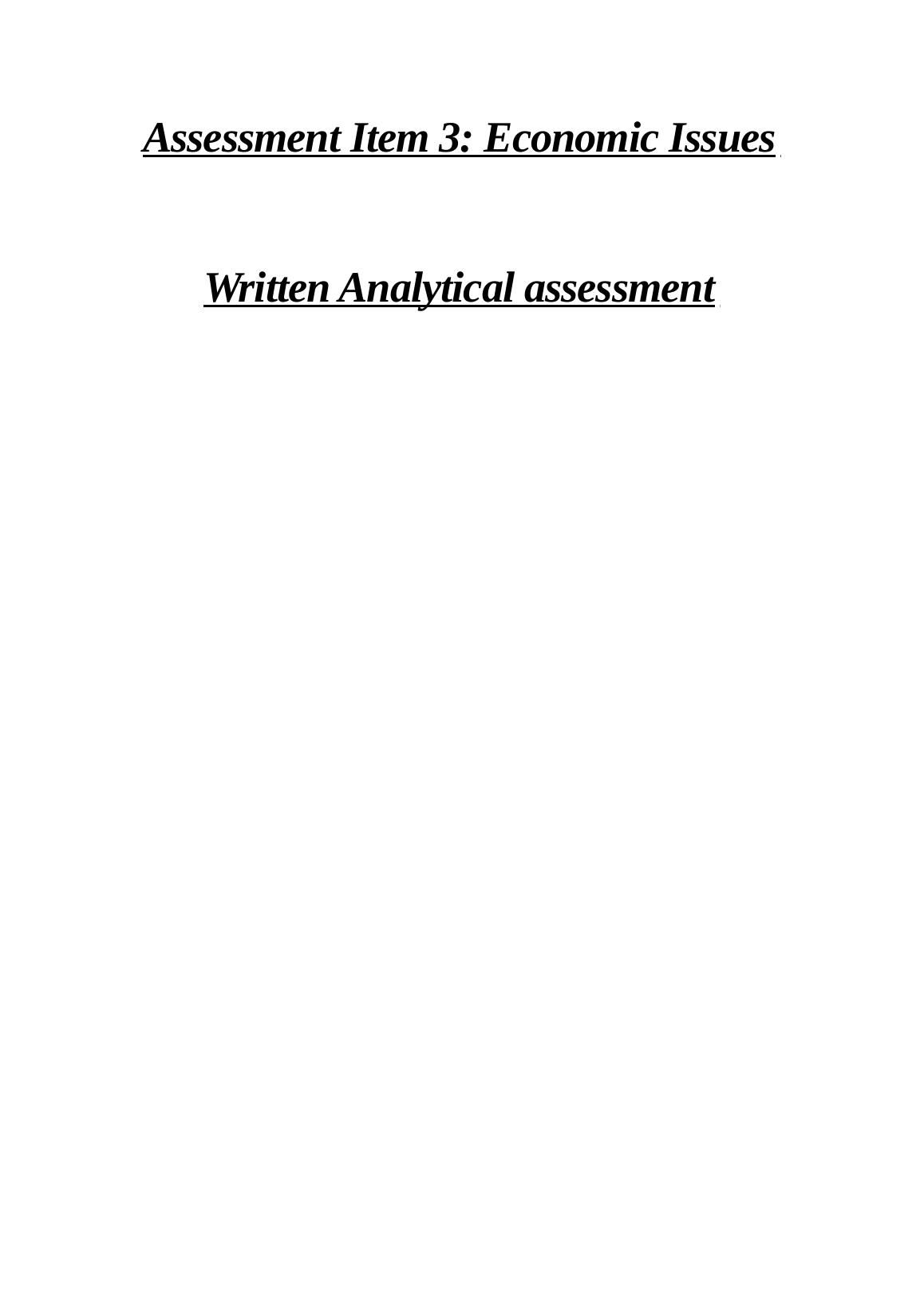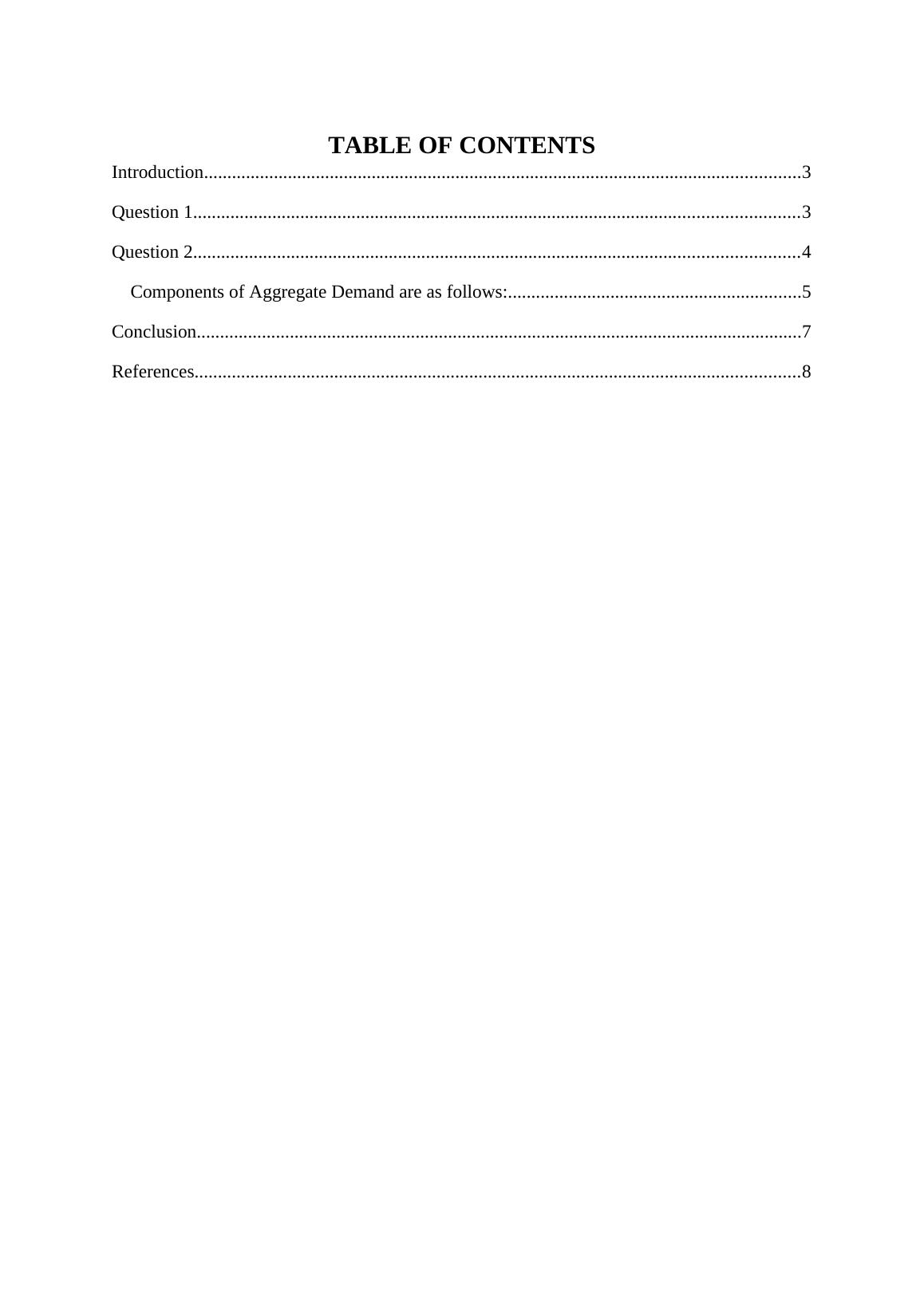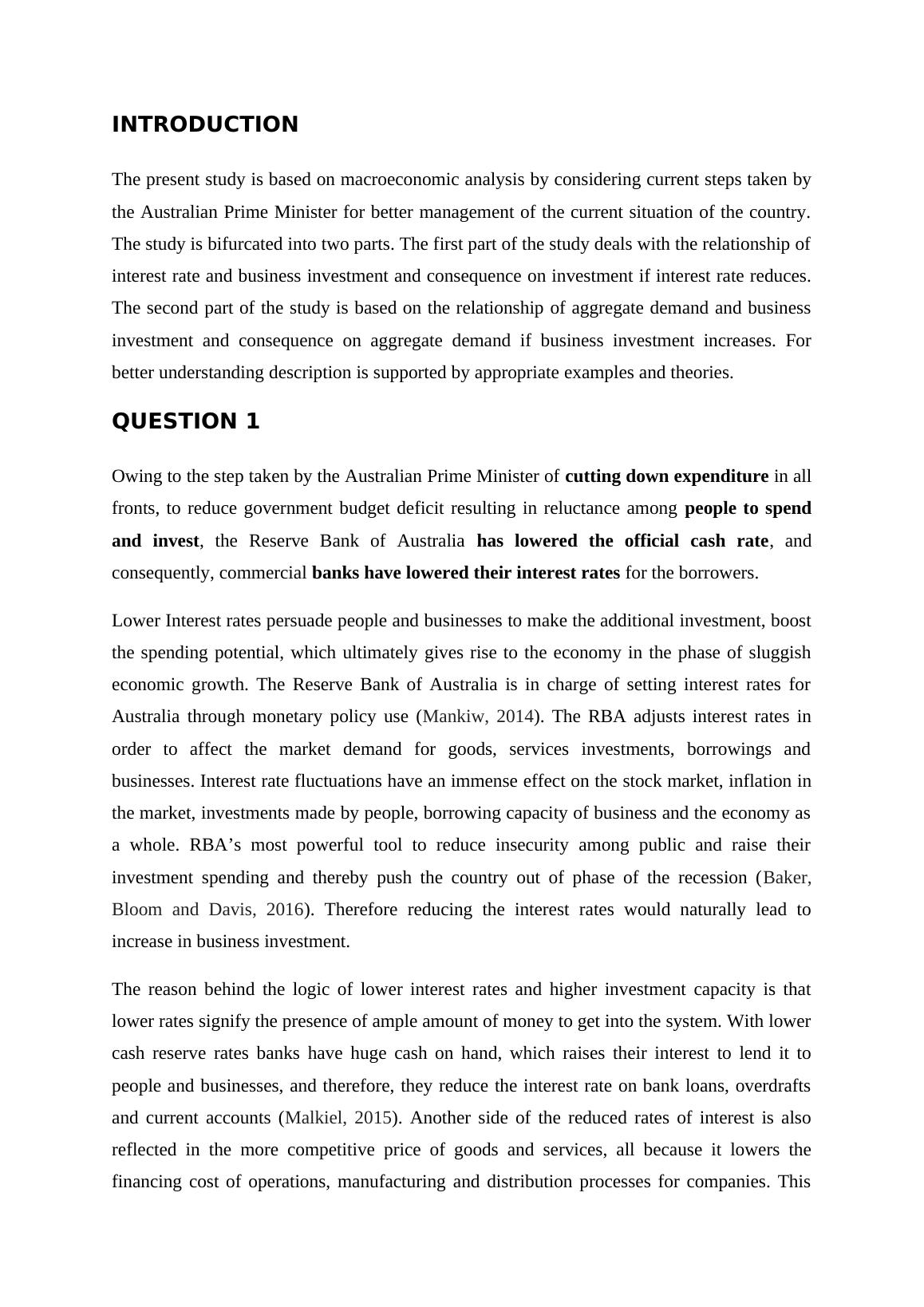Macroeconomic Analysis of the Current State of Australia
Added on 2020-05-11
8 Pages1787 Words333 Views
Assessment Item 3: Economic IssuesWritten Analytical assessment

TABLE OF CONTENTSIntroduction................................................................................................................................3Question 1..................................................................................................................................3Question 2..................................................................................................................................4Components of Aggregate Demand are as follows:...............................................................5Conclusion..................................................................................................................................7References..................................................................................................................................8

INTRODUCTIONThe present study is based on macroeconomic analysis by considering current steps taken bythe Australian Prime Minister for better management of the current situation of the country.The study is bifurcated into two parts. The first part of the study deals with the relationship ofinterest rate and business investment and consequence on investment if interest rate reduces.The second part of the study is based on the relationship of aggregate demand and businessinvestment and consequence on aggregate demand if business investment increases. Forbetter understanding description is supported by appropriate examples and theories. QUESTION 1Owing to the step taken by the Australian Prime Minister of cutting down expenditure in allfronts, to reduce government budget deficit resulting in reluctance among people to spendand invest, the Reserve Bank of Australia has lowered the official cash rate, andconsequently, commercial banks have lowered their interest rates for the borrowers. Lower Interest rates persuade people and businesses to make the additional investment, boostthe spending potential, which ultimately gives rise to the economy in the phase of sluggisheconomic growth. The Reserve Bank of Australia is in charge of setting interest rates forAustralia through monetary policy use (Mankiw, 2014). The RBA adjusts interest rates inorder to affect the market demand for goods, services investments, borrowings andbusinesses. Interest rate fluctuations have an immense effect on the stock market, inflation inthe market, investments made by people, borrowing capacity of business and the economy asa whole. RBA’s most powerful tool to reduce insecurity among public and raise theirinvestment spending and thereby push the country out of phase of the recession (Baker,Bloom and Davis, 2016). Therefore reducing the interest rates would naturally lead toincrease in business investment. The reason behind the logic of lower interest rates and higher investment capacity is thatlower rates signify the presence of ample amount of money to get into the system. With lowercash reserve rates banks have huge cash on hand, which raises their interest to lend it topeople and businesses, and therefore, they reduce the interest rate on bank loans, overdraftsand current accounts (Malkiel, 2015). Another side of the reduced rates of interest is alsoreflected in the more competitive price of goods and services, all because it lowers thefinancing cost of operations, manufacturing and distribution processes for companies. This

End of preview
Want to access all the pages? Upload your documents or become a member.
Related Documents
ECONOMICS FOR MANAGERS| Assignmentlg...
|7
|1449
|151
Economics for Managers Assignment | Economics Assignmentlg...
|7
|1290
|63
Economics for Managers - Australia Assignmentlg...
|7
|1469
|47
The Effects of Reduction in the Federal Cash Rateslg...
|10
|2013
|40
The Dangers of a Steady Low Cash Rate Approachlg...
|22
|4256
|29
Usage of Monetary and Fiscal Policies in Reducing Unemploymentlg...
|9
|1468
|302